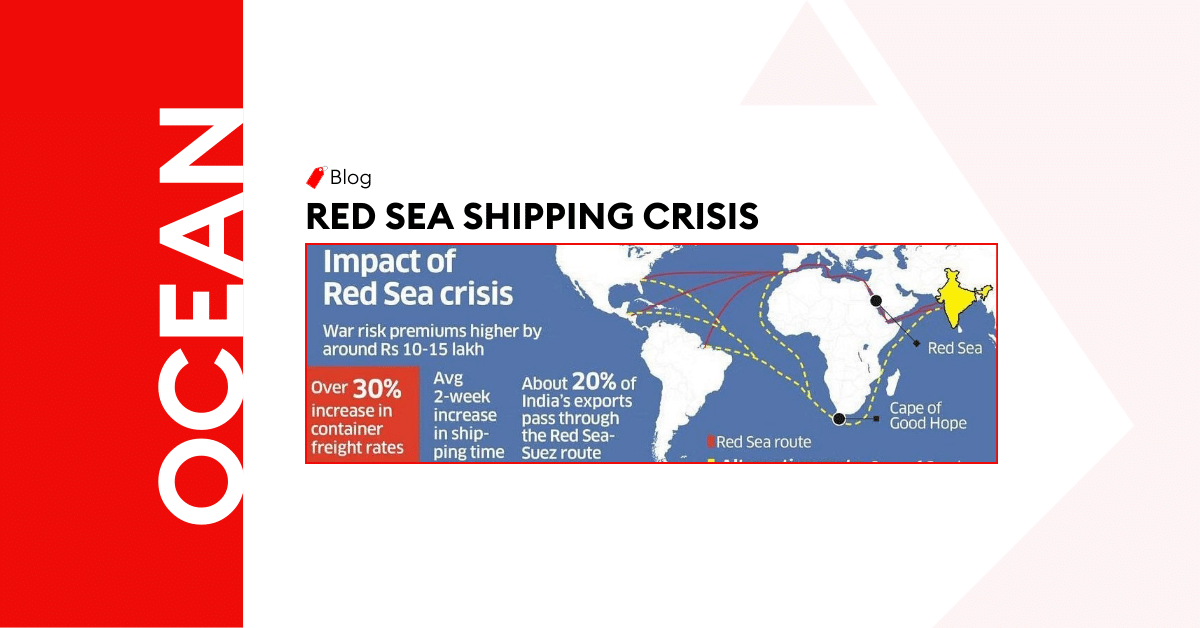
General Strategies to Manage High Freight Cost in 2022
As the year 2021 gradually comes to an end, a priority issue for shippers is developing methods for freight cost reduction in the coming year 2022.
The freight market is still experiencing lingering effects from the global Covid-19 pandemic and recent minor outbreaks in key shipping regions, leading to unusually high and unstable prices in freight transportation.
Yet, there are freight transportation cost-saving ideas you can incorporate to keep your import/export operations profitable. Before we discuss them, let’s briefly understand what freight rates mean.
What Are Freight Rates?
Basically, an ocean freight rate is a fee you pay a freight carrier (or shipping line/company) to move your freight (goods) from point A to another location B.
It is usually presented as a quotation from the shipping company. This quote combines all the charges levied by the shipping company and additional costs involved in the freight process.
Calculating Ocean Freight Costs
Calculating price in ocean freight involves a combination of vital factors. These include the
- The mode of transport,
- The type of goods (cargo) to be shipped,
- Cargo size and weight or volume,
- Freight class (perishable, hazardous, or fragile),
- Shipping method (FCL, LCL, multimodal, expedited), and
- Estimated distance to the final destination.
Generally, a freight forwarding cost calculator considers the following items;
- Expenses for cargo transport to the port terminal
- Charges for goods handling and loading at the port
- Costs of preparing appropriate shipping documents
- Clearance fees imposed by the Customs Authority
- The base fee for ocean freight
- Surcharges (or extra costs) for operational, security, and emergency expenses during transit, including fuel surcharges, peak season demands, and traveling through unique routes
- Compensations for currency exchange rate fluctuations
Why Do Freight Rates Fluctuate?
Now, more than ever before, rates for cargo transport are volatile and ever-changing. But what factors are involved in causing the unstable pricing of freight rates?
- Supply and Demand: This involves the number of ships available to transport goods and the cargo volume to be transported from port to port.
- Type of cargo: Cargo requiring special handling procedures attracts higher charges. Examples are hazardous, fragile, bulky, and perishable goods.
- Distance from the origin to destination: Destinations at the end of longer or lesser-known routes typically attract higher fees, especially for low-capacity ports. More established ports, or destinations with shorter routes, require fewer fees.
- Currency exchange: adjustments for differences in currency exchange
- Bunker Fuel: means fuel for freight-carrying ships.
- Seasonal demand: During peak seasons like Christmas and holidays, increased shipping activities are the norm. With increasing demand comes the high cost of freight.
- Size of shipping vessel: Bigger ships use more fuel but often have a larger capacity for moving cargo.
- Environmental regulations: Such as IMO 2020, requiring shipping vessels to use low emission fuels that are eco-friendly but more expensive than regular fuel
Managing Freight Rate Fluctuations
The costs of ocean freight are easily subject to change, particularly to higher prices than you would expect. Yet, you can implement some proven techniques to avoid spending more than necessary.
Below are some of the best ways to reduce transportation costs in logistics.
Consider Consolidation
When shipping small shipments that do not require full container space, it’s ideal to utilize consolidation. Consolidation involves combining your LCL (Less than Container Load) shipments with a similar cargo of other shippers.
As a result, you’ll only pay for your share of the container space used, less handling is required, and goods are usually delivered on time.
Build Long-term Carrier Relationships
Your main objective might be to reduce sea freight cost, yet maintaining long-term contracts with a particular carrier is more beneficial than switching shipping companies often to get the best rates.
Contracting a steady and pre-determined shipment volume to a carrier over a sustainable period enables the carrier to source for nearby customers. Also, you get quality services and better locked-in rates against future price fluctuation and inflation.
Maximize Off-peak Days and Seasons
Scheduling shipping on off-peak days such as Fridays and Mondays can help save costs, as most companies have backhaul capacity after delivering for on-peak midweek and weekend days.
Festive holidays and end-of-the-year periods also come with high demand for carriers. It’s advisable, and practical, to limit cargo transport towards the year-end and during holiday seasons. Also, ensure to stock up well ahead of these periods.
Ship More Cargo Less Often
When possible, plan your shipments such that you move bulk cargo over longer periods instead of shipping smaller cargoes within a short amount of time.
For instance, you’ll reduce expenses by shipping 20 pallets in one month than four pallets every month.
Reduce Dunnage with Smart Packaging
Dunnage refers to all the airbags, strapping, and bracing necessary to secure cargo against damage while in transit. While it is important, note that more packaging means more space taken by the cargo which means more expense.
Prior communication with a carrier can ensure you utilize the best form of packaging for your shipment and eliminate any dead packaging weight to free up available space.
Hire a Logistics Partner
Organizing cost-effective freight is essential to profitability and productivity in business. However, for small businesses, it might be taking up time better spent focusing on the business’s core competencies.
Outsourcing your shipping operations to a 3PL, for instance, will save time, money, and labor. With industry networks built on experience and expertise, a logistics company is able to offer adequate warehousing, secure competitive freight rates, and reliable delivery services.
Additional Steps to Manage Freight Rate Costs
Other initiatives you can put in place to reduce inbound freight costs are;
- Be informed about all the applicable surcharges
- Avoid delays in loading and unloading shipments
- Consider multimodal (sea-air) transport to save both cost and time
- Contract carriers close to your destination points
- Use load boards, where one-off shipments can be carried as backhaul
- Offer more flexible pick-up and delivery options, such as nighttime
- Develop better communication with carriers
- Stay up-to-date with relevant logistics/transport groups both online and offline
- Invest in modern logistics technologies to identify and correct freight weaknesses
How Al Sharqi Can Help
At Al Sharqi, we are committed to helping businesses grow by offering value-added services right from the point of origin to the destination of the shipment.
Our wide network of quality shipping partners is designed to offer convenience, reliability, and profitability in operation. Visit us at www.alsharqi.co to learn more.
EndNote
The year 2022 is already rife with many uncertainties and predictions regarding the business of freight transportation. However, one sure way to remain a step ahead is to engage in quality freight rate management when importing and exporting goods.
Developing and maintaining working practices for freight cost reduction can only better cost negotiations with freight carriers in the coming year. Best of all, you move goods at reasonable rates, reliably fulfill customers’ orders, and maintain a good overall business reputation.
Our customer service team is happy to assist you with planing your next booking.

Related Articles
Al Sharqi Shipping and Logistics Wins Maersk Most Valuable Partner 2023 Award
Dubai, UAE – May 24, 2024 – Al Sharqi Shipping is proud to announce that it has been awarded the
Sustainability Milestone: Al Sharqi Shipping Receives 2023 Maersk ECO Delivery Certificate158
Al Sharqi named as the Maersk Line UAE Most Valuable Partner 2022 Dubai, UAE – Al Sharqi Shipping
Strategic Shifts in Maritime Trade: Responding to the Red Sea Shipping Crisis
The Red Sea, a critical maritime artery connecting Europe, Asia and North America but recently it ha







Post a comment
You must be logged in to post a comment.